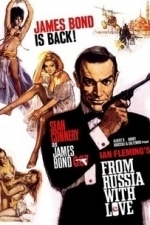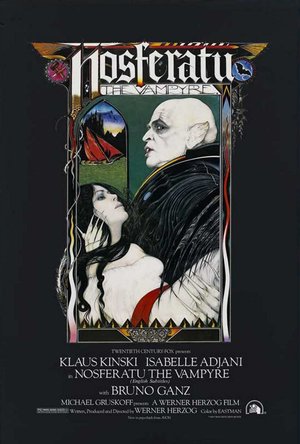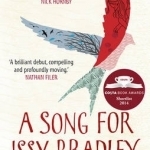Search
Search results
Darren (1599 KP) rated From Russia With Love (1964) in Movies
Nov 7, 2019
Characters – James Bond is forced into his next mission which includes seducing a spy that is wanting to turn on Russia, he shows us again just how skilled he is when it comes to dealing with life and death situations and his awareness of dangers around him. Tatiana Romanova is the Russian spy that has offered to give up information for safety to England, she might not be as true as James is told about, even though we know she is being forced into this mission. Rosa Klebb is the one that is recruiting the agents with Tatiana and Grant being her picks to help SPECTRE eliminate James Bond. Grant is the newest recruit assassin, hard as nails, resourceful and everything James will find difficult to beat in a fight.
Performances – Sean Connery has grown into this role being even better than the first film, he become the superstar name after this outing. Daniela Bianchi is good for a Bond girl, she is stronger than the first one and now we know what type of women will get in this role. Robert Shaw as the villain is great, he looks cold calculated through every single scene.
Story – The story here is a lot more interesting than the first film, we learn early on about the SPECTRE plan which shows us how we have a growing villainous threat for Bond to tackle. This helps make the franchise even more enjoyable because it isn’t just Bond solving a case, it is him trying to stay ahead while we know the twists coming. The story leaves us open to learn more about SPECTRE in future film which again is a pleasure for the audience to be seeing. How everything unfolds well we know Bond can solve the problems he is facing and we get to see the start of the infamous gadgets.
Action/Adventure – The action in the film is bigger, the fights last longer and the adventure that Bond must go on is showing us just how big the terrorist battle will be.
Settings – The film takes place for the most part in Turkey, which shows us another neutral country in the middle of the battle, the train sequences could be argued to be the most enjoyable though.
Scene of the Movie – The gadgets being introduced.
That Moment That Annoyed Me – James Bond attitude toward women.
Final Thoughts – This is a wonderful second instalment in the franchise, it gives us a bigger threat for long term villains in SPECTRE and does have big action throughout.
Overall: The sequel that makes things bigger.
Performances – Sean Connery has grown into this role being even better than the first film, he become the superstar name after this outing. Daniela Bianchi is good for a Bond girl, she is stronger than the first one and now we know what type of women will get in this role. Robert Shaw as the villain is great, he looks cold calculated through every single scene.
Story – The story here is a lot more interesting than the first film, we learn early on about the SPECTRE plan which shows us how we have a growing villainous threat for Bond to tackle. This helps make the franchise even more enjoyable because it isn’t just Bond solving a case, it is him trying to stay ahead while we know the twists coming. The story leaves us open to learn more about SPECTRE in future film which again is a pleasure for the audience to be seeing. How everything unfolds well we know Bond can solve the problems he is facing and we get to see the start of the infamous gadgets.
Action/Adventure – The action in the film is bigger, the fights last longer and the adventure that Bond must go on is showing us just how big the terrorist battle will be.
Settings – The film takes place for the most part in Turkey, which shows us another neutral country in the middle of the battle, the train sequences could be argued to be the most enjoyable though.
Scene of the Movie – The gadgets being introduced.
That Moment That Annoyed Me – James Bond attitude toward women.
Final Thoughts – This is a wonderful second instalment in the franchise, it gives us a bigger threat for long term villains in SPECTRE and does have big action throughout.
Overall: The sequel that makes things bigger.
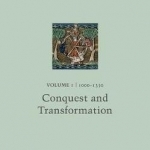
The Oxford English Literary History: Volume 1: 1000-1350: Conquest and Transformation
Book
The Oxford English Literary History is the new century's definitive account of a rich and diverse...
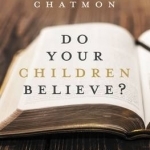
Do Your Children Believe?: Becoming Intentional About Your Family's Faith and Spiritual Legacy
Book
Are your children ready to live out their faith in the real world? Most parents who value Christian...
Matthew Krueger (10051 KP) rated Nosferatu the Vampyre (1979) in Movies
Oct 28, 2020 (Updated Oct 28, 2020)
The Vampire Among Them
Nosferatu The Vampyre- is a very slow movie. Very slow, for 90% of the time nothing happens and when some does happens its only for three minutes max. I always wanted to watch the oringal, never got a chance to, hopefully soon i will. As for this remake its so-so.
The plot: Jonathan Harker is sent away to Count Dracula's castle to sell him a house in Virna, where he lives. But Count Dracula is a vampire, an undead ghoul living off men's blood. Inspired by a photograph of Lucy Harker, Jonathan's wife, Dracula moves to Virna, bringing with him death and plague... An unusually contemplative version of Dracula, in which the vampire bears the cross of not being able to get old and die.
There are two different versions of the film, one in which the actors speak English, and one in which they speak German.
Herzog's production of Nosferatu was very well received by critics and enjoyed a comfortable degree of commercial success.
The film also marks the second of five collaborations between director Herzog and actor Kinski.
While the basic story is derived from Bram Stoker's novel Dracula, director Herzog made the 1979 film primarily as an homage remake of F. W. Murnau's silent film Nosferatu (1922), which differs somewhat from Stoker's original work. The makers of the earlier film could not obtain the rights for a film adaptation of Dracula, so they changed a number of minor details and character names in an unsuccessful attempt to avoid copyright infringement on the intellectual property owned (at the time) by Stoker's widow Florence. A lawsuit was filed, resulting in an order for the destruction of all prints of the film. Some prints survived, and were restored after Florence Stoker had died and the copyright had expired.
By the 1960s and early 1970s the original silent returned to circulation, and was enjoyed by a new generation of moviegoers.
In 1979, by the very day the copyright for Dracula had entered the public domain, Herzog proceeded with his updated version of the classic German film, which could now include the original character names.
Herzog saw his film as a parable about the fragility of order in a staid, bourgeois town. "It is more than a horror film", he says. "Nosferatu is not a monster, but an ambivalent, masterful force of change. When the plague threatens, people throw their property into the streets, they discard their bourgeois trappings. A re‐evaluation
of life and its meaning takes place."
Like i said its a decent movie.
The plot: Jonathan Harker is sent away to Count Dracula's castle to sell him a house in Virna, where he lives. But Count Dracula is a vampire, an undead ghoul living off men's blood. Inspired by a photograph of Lucy Harker, Jonathan's wife, Dracula moves to Virna, bringing with him death and plague... An unusually contemplative version of Dracula, in which the vampire bears the cross of not being able to get old and die.
There are two different versions of the film, one in which the actors speak English, and one in which they speak German.
Herzog's production of Nosferatu was very well received by critics and enjoyed a comfortable degree of commercial success.
The film also marks the second of five collaborations between director Herzog and actor Kinski.
While the basic story is derived from Bram Stoker's novel Dracula, director Herzog made the 1979 film primarily as an homage remake of F. W. Murnau's silent film Nosferatu (1922), which differs somewhat from Stoker's original work. The makers of the earlier film could not obtain the rights for a film adaptation of Dracula, so they changed a number of minor details and character names in an unsuccessful attempt to avoid copyright infringement on the intellectual property owned (at the time) by Stoker's widow Florence. A lawsuit was filed, resulting in an order for the destruction of all prints of the film. Some prints survived, and were restored after Florence Stoker had died and the copyright had expired.
By the 1960s and early 1970s the original silent returned to circulation, and was enjoyed by a new generation of moviegoers.
In 1979, by the very day the copyright for Dracula had entered the public domain, Herzog proceeded with his updated version of the classic German film, which could now include the original character names.
Herzog saw his film as a parable about the fragility of order in a staid, bourgeois town. "It is more than a horror film", he says. "Nosferatu is not a monster, but an ambivalent, masterful force of change. When the plague threatens, people throw their property into the streets, they discard their bourgeois trappings. A re‐evaluation
of life and its meaning takes place."
Like i said its a decent movie.
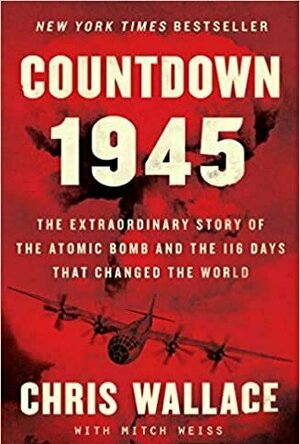
Countdown 1945
Book
From Chris Wallace, the veteran journalist and anchor of Fox News Sunday, comes an electrifying...

Lifeline...
Games and Entertainment
App
“[A] surprising iPhone and Apple Watch bestseller is pushing the boundaries of fiction” -...
Hazel (1853 KP) rated A Song for Issy Bradley in Books
May 30, 2017
Heart Wrenching
I received this book for free through Goodreads First Reads.
A Song for Issy Bradley is the captivating debut novel of talented author Carys Bray. Set in modern day Britain this heart-breaking story shows a family’s struggle to overcome the loss of their youngest child whilst also adhering to the strict rules of their Mormon religion.
It begins with seven-year-old Jacob’s birthday and Mum, Claire, is rushing around with last minute party preparations, whilst her husband, Bishop Ian, is off attending to his religious duties. Although Claire is aware that Issy is feeling poorly she does not realize how serious it is until much later - too much later. After being rushed to hospital with meningitis Issy’s prognosis is not good. Despite Ian’s blessings and prayers no miracle occurs and Issy passes away the following day.
The main storyline is about how the characters cope with this shockingly sudden loss. Claire hides herself away from everyone by remaining in bed for weeks and ignoring her duties and her family’s pleas. Ian, worried that Claire is not grieving in the proper Mormon way, throws himself even deeper into religion by focusing on what is expected of him as a Bishop rather than concentrating on his children’s needs.
Zipporah, the eldest, is expected to become the woman of the house until Claire returns to “normal”. As well as studying for her exams and doing the housework, Ian insists she attend all church events for people her age. Alone she worries about love, marriage and falling into sin; she would really like to be able to talk to her Mum. Alma, on the other hand, is becoming more and more rebellious. Not only does he have a stupid name (Alma was named after a prophet in the book of Mormon) his ambition to become a professional footballer is not conducive to living the gospel. Although he makes jokes and rude remarks about religious ideas there is still a part of him that believes, and despite his attitude it is clear he is deeply affected by Issy’s death.
Jacob’s reaction is the most heart wrenching of all. Being so young he believes everything he is told especially the bible stories he hears at church. If Jesus can bring people back to life, perhaps Issy can live again? He puts his faith in God and waits in vain for his sister’s miraculous return.
The story is shown through each of these five character’s point of views, which is interesting as the reader gets a chance to see how each person’s actions affect the others and gives a greater insight into character developments. It is gratifying to witness, albeit slowly, the family pick themselves up and begin to work together and carry on.
As to be expected with a story about Mormons there is a large amount of bible quotation. Many are from the Book of Mormon but there are numerous biblical references that Christians of all denominations will appreciate. The author was raised as a Mormon so it can only be assumed that all the details are accurate. Non-believers, however, should not be put off from reading this beautiful book: it is the way in which people deal with loss that is important and there is no preaching at the reader or attempts to convert.
This novel is highly recommended for female and male readers alike, particularly those who enjoy emotionally charged stories; and, of course, those interested in religion will love this book too.
A Song for Issy Bradley is the captivating debut novel of talented author Carys Bray. Set in modern day Britain this heart-breaking story shows a family’s struggle to overcome the loss of their youngest child whilst also adhering to the strict rules of their Mormon religion.
It begins with seven-year-old Jacob’s birthday and Mum, Claire, is rushing around with last minute party preparations, whilst her husband, Bishop Ian, is off attending to his religious duties. Although Claire is aware that Issy is feeling poorly she does not realize how serious it is until much later - too much later. After being rushed to hospital with meningitis Issy’s prognosis is not good. Despite Ian’s blessings and prayers no miracle occurs and Issy passes away the following day.
The main storyline is about how the characters cope with this shockingly sudden loss. Claire hides herself away from everyone by remaining in bed for weeks and ignoring her duties and her family’s pleas. Ian, worried that Claire is not grieving in the proper Mormon way, throws himself even deeper into religion by focusing on what is expected of him as a Bishop rather than concentrating on his children’s needs.
Zipporah, the eldest, is expected to become the woman of the house until Claire returns to “normal”. As well as studying for her exams and doing the housework, Ian insists she attend all church events for people her age. Alone she worries about love, marriage and falling into sin; she would really like to be able to talk to her Mum. Alma, on the other hand, is becoming more and more rebellious. Not only does he have a stupid name (Alma was named after a prophet in the book of Mormon) his ambition to become a professional footballer is not conducive to living the gospel. Although he makes jokes and rude remarks about religious ideas there is still a part of him that believes, and despite his attitude it is clear he is deeply affected by Issy’s death.
Jacob’s reaction is the most heart wrenching of all. Being so young he believes everything he is told especially the bible stories he hears at church. If Jesus can bring people back to life, perhaps Issy can live again? He puts his faith in God and waits in vain for his sister’s miraculous return.
The story is shown through each of these five character’s point of views, which is interesting as the reader gets a chance to see how each person’s actions affect the others and gives a greater insight into character developments. It is gratifying to witness, albeit slowly, the family pick themselves up and begin to work together and carry on.
As to be expected with a story about Mormons there is a large amount of bible quotation. Many are from the Book of Mormon but there are numerous biblical references that Christians of all denominations will appreciate. The author was raised as a Mormon so it can only be assumed that all the details are accurate. Non-believers, however, should not be put off from reading this beautiful book: it is the way in which people deal with loss that is important and there is no preaching at the reader or attempts to convert.
This novel is highly recommended for female and male readers alike, particularly those who enjoy emotionally charged stories; and, of course, those interested in religion will love this book too.
Hazel (1853 KP) rated A Song for Issy Bradley in Books
Dec 7, 2018
<i>I received this book for free through Goodreads First Reads.</i>
<i>A Song for Issy Bradley</i> is the captivating debut novel of talented author Carys Bray. Set in modern day Britain this heart-breaking story shows a family’s struggle to overcome the loss of their youngest child whilst also adhering to the strict rules of their Mormon religion.
It begins with seven-year-old Jacob’s birthday and Mum, Claire, is rushing around with last minute party preparations, whilst her husband, Bishop Ian, is off attending to his religious duties. Although Claire is aware that Issy is feeling poorly she does not realize how serious it is until much later - too much later. After being rushed to hospital with meningitis Issy’s prognosis is not good. Despite Ian’s blessings and prayers no miracle occurs and Issy passes away the following day.
The main storyline is about how the characters cope with this shockingly sudden loss. Claire hides herself away from everyone by remaining in bed for weeks and ignoring her duties and her family’s pleas. Ian, worried that Claire is not grieving in the proper Mormon way, throws himself even deeper into religion by focusing on what is expected of him as a Bishop rather than concentrating on his children’s needs.
Zipporah, the eldest, is expected to become the woman of the house until Claire returns to “normal”. As well as studying for her exams and doing the housework, Ian insists she attend all church events for people her age. Alone she worries about love, marriage and falling into sin; she would really like to be able to talk to her Mum. Alma, on the other hand, is becoming more and more rebellious. Not only does he have a stupid name (Alma was named after a prophet in the book of Mormon) his ambition to become a professional footballer is not conducive to living the gospel. Although he makes jokes and rude remarks about religious ideas there is still a part of him that believes, and despite his attitude it is clear he is deeply affected by Issy’s death.
Jacob’s reaction is the most heart wrenching of all. Being so young he believes everything he is told especially the bible stories he hears at church. If Jesus can bring people back to life, perhaps Issy can live again? He puts his faith in God and waits in vain for his sister’s miraculous return.
The story is shown through each of these five character’s point of views, which is interesting as the reader gets a chance to see how each person’s actions affect the others and gives a greater insight into character developments. It is gratifying to witness, albeit slowly, the family pick themselves up and begin to work together and carry on.
As to be expected with a story about Mormons there is a large amount of bible quotation. Many are from the Book of Mormon but there are numerous biblical references that Christians of all denominations will appreciate. The author was raised as a Mormon so it can only be assumed that all the details are accurate. Non-believers, however, should not be put off from reading this beautiful book: it is the way in which people deal with loss that is important and there is no preaching at the reader or attempts to convert.
This novel is highly recommended for female and male readers alike, particularly those who enjoy emotionally charged stories; and, of course, those interested in religion will love this book too.
<i>A Song for Issy Bradley</i> is the captivating debut novel of talented author Carys Bray. Set in modern day Britain this heart-breaking story shows a family’s struggle to overcome the loss of their youngest child whilst also adhering to the strict rules of their Mormon religion.
It begins with seven-year-old Jacob’s birthday and Mum, Claire, is rushing around with last minute party preparations, whilst her husband, Bishop Ian, is off attending to his religious duties. Although Claire is aware that Issy is feeling poorly she does not realize how serious it is until much later - too much later. After being rushed to hospital with meningitis Issy’s prognosis is not good. Despite Ian’s blessings and prayers no miracle occurs and Issy passes away the following day.
The main storyline is about how the characters cope with this shockingly sudden loss. Claire hides herself away from everyone by remaining in bed for weeks and ignoring her duties and her family’s pleas. Ian, worried that Claire is not grieving in the proper Mormon way, throws himself even deeper into religion by focusing on what is expected of him as a Bishop rather than concentrating on his children’s needs.
Zipporah, the eldest, is expected to become the woman of the house until Claire returns to “normal”. As well as studying for her exams and doing the housework, Ian insists she attend all church events for people her age. Alone she worries about love, marriage and falling into sin; she would really like to be able to talk to her Mum. Alma, on the other hand, is becoming more and more rebellious. Not only does he have a stupid name (Alma was named after a prophet in the book of Mormon) his ambition to become a professional footballer is not conducive to living the gospel. Although he makes jokes and rude remarks about religious ideas there is still a part of him that believes, and despite his attitude it is clear he is deeply affected by Issy’s death.
Jacob’s reaction is the most heart wrenching of all. Being so young he believes everything he is told especially the bible stories he hears at church. If Jesus can bring people back to life, perhaps Issy can live again? He puts his faith in God and waits in vain for his sister’s miraculous return.
The story is shown through each of these five character’s point of views, which is interesting as the reader gets a chance to see how each person’s actions affect the others and gives a greater insight into character developments. It is gratifying to witness, albeit slowly, the family pick themselves up and begin to work together and carry on.
As to be expected with a story about Mormons there is a large amount of bible quotation. Many are from the Book of Mormon but there are numerous biblical references that Christians of all denominations will appreciate. The author was raised as a Mormon so it can only be assumed that all the details are accurate. Non-believers, however, should not be put off from reading this beautiful book: it is the way in which people deal with loss that is important and there is no preaching at the reader or attempts to convert.
This novel is highly recommended for female and male readers alike, particularly those who enjoy emotionally charged stories; and, of course, those interested in religion will love this book too.
Heather Cranmer (2721 KP) rated Paper Dolls (Dark Carousel #2) in Books
Nov 7, 2020
I really loved Dollhouse, the first book in the Dark Carousel series by Anya Allyn. I couldn't wait to dive into the next book in the series, Paper Dolls. I wanted to love Paper Dolls as much as Dollhouse, but it just wasn't as great.
Paper Dolls takes place right after Dollhouse although Paper Dolls also goes back to 1920 to focus more on Jessamine's back story and to thicken the modern day plot. While I loved Jessamine's story, Cassie's narrative is a bit lackluster. The pacing for Cassie's plot feels very slow moving. While there were a few plot twists regarding Cassie's story, the main one was the most predictable from early on. Don't get me wrong, Allyn's writing is fantastic, but Cassie's plotline just didn't wow me as before. Jessamine's, on the other hand, was fantastic! I loved learning more about Jessamine and how she become like she was in Dollhouse. Jessamine's narrative moved at a great pace, and I would get so excited when her chapters would come up. I also loved how Jessamine's chapters involved more backstory for Henry and Audette and explains how they became ghosts. It also talks more about the mysterious Donovan Fiveash. Many of the other characters, even characters with small parts, from Dollhouse are mentioned again in Paper Dolls. We get a bit more of their back story as well which was nice. There is a big cliffhanger at the end of this book which will lead into the next book in the series, Marionette. Although this book is intended for young adults, I would say it's more aimed towards a mature young adult audience as it's a lot more dark compared to Dollhouse.
As with the first book in the series, Anya Allyn did a fantastic job keeping her characters realistic relatable. Even though I found Cassie's story a little boring, I still enjoyed Cassie's character. I did find her a bit naïve in this book, but she is a teenager, so I could understand why she'd trust the first boy that showed her attention. I felt like I was Cassie's babysitter and was mentally urging her not to trust anyone! Jessamine was my obviously my favorite character. I just wanted to hug her as she had such a sad life for the most part. After reading her story, I understood why she was the way she was in Dollhouse. I really wanted to protect Jessamine throughout the whole book especially when she was still alive although I already knew she'd end up as a ghost. Henry was a character I didn't think I'd end up liking since he seemed like a bad guy in the first book. However, the audience is shown a whole different side of Henry in Paper Dolls. I just wanted Audette to disappear though. Not because she was written poorly but just because how vile and horrible she was to Jessamine. Although they were nice, I had a hard time trusting the Batiste family. They just seemed a little too nice for my liking.
Trigger warnings for Paper Dolls include death, murder, attempted rape, violence, occult activity, and mentions of sex (though not graphic).
Despite being a bit of a slow read, I still enjoyed Paper Dolls. Learning more about many of the ghosts' backstory was extremely interesting, and I loved all the characters. I would recommend Paper Dolls by Anya Allyn to those aged 16+ who love supernatural horror. I have already started reading Marionette, the next book in the Dark Carousel series, since I'm loving this series!
Paper Dolls takes place right after Dollhouse although Paper Dolls also goes back to 1920 to focus more on Jessamine's back story and to thicken the modern day plot. While I loved Jessamine's story, Cassie's narrative is a bit lackluster. The pacing for Cassie's plot feels very slow moving. While there were a few plot twists regarding Cassie's story, the main one was the most predictable from early on. Don't get me wrong, Allyn's writing is fantastic, but Cassie's plotline just didn't wow me as before. Jessamine's, on the other hand, was fantastic! I loved learning more about Jessamine and how she become like she was in Dollhouse. Jessamine's narrative moved at a great pace, and I would get so excited when her chapters would come up. I also loved how Jessamine's chapters involved more backstory for Henry and Audette and explains how they became ghosts. It also talks more about the mysterious Donovan Fiveash. Many of the other characters, even characters with small parts, from Dollhouse are mentioned again in Paper Dolls. We get a bit more of their back story as well which was nice. There is a big cliffhanger at the end of this book which will lead into the next book in the series, Marionette. Although this book is intended for young adults, I would say it's more aimed towards a mature young adult audience as it's a lot more dark compared to Dollhouse.
As with the first book in the series, Anya Allyn did a fantastic job keeping her characters realistic relatable. Even though I found Cassie's story a little boring, I still enjoyed Cassie's character. I did find her a bit naïve in this book, but she is a teenager, so I could understand why she'd trust the first boy that showed her attention. I felt like I was Cassie's babysitter and was mentally urging her not to trust anyone! Jessamine was my obviously my favorite character. I just wanted to hug her as she had such a sad life for the most part. After reading her story, I understood why she was the way she was in Dollhouse. I really wanted to protect Jessamine throughout the whole book especially when she was still alive although I already knew she'd end up as a ghost. Henry was a character I didn't think I'd end up liking since he seemed like a bad guy in the first book. However, the audience is shown a whole different side of Henry in Paper Dolls. I just wanted Audette to disappear though. Not because she was written poorly but just because how vile and horrible she was to Jessamine. Although they were nice, I had a hard time trusting the Batiste family. They just seemed a little too nice for my liking.
Trigger warnings for Paper Dolls include death, murder, attempted rape, violence, occult activity, and mentions of sex (though not graphic).
Despite being a bit of a slow read, I still enjoyed Paper Dolls. Learning more about many of the ghosts' backstory was extremely interesting, and I loved all the characters. I would recommend Paper Dolls by Anya Allyn to those aged 16+ who love supernatural horror. I have already started reading Marionette, the next book in the Dark Carousel series, since I'm loving this series!
Heather Cranmer (2721 KP) rated The Westing Game in Books
Dec 13, 2020
While looking for my next read, I came across The Westing Game by Ellen Raskin. I had never heard of it before, but the synopsis sounded interesting. I decided to give it a read, and I'm glad I did.
Sixteen people all move into Sam Westing's apartment building after receiving a letter inviting them to move in. They are the only tenants in the building. Little do they know that they were picked to play in a game where they could potentially win a lot of money. However, they must play hard to win if they want to inherit millions even if the game may be dangerous.
I didn't realize it while reading The Westing Game, but this book is considered middle grade fiction. The way it is written, I think every age group would enjoy it. It's a fun and easy read. The plot flows smoothly, and the story progresses with ease. Each page is filled with mystery. I found myself guessing who was the murderer and which person would figure out the clues to inherit Sam Westing's inheritance. I will say that The Westing Game's mystery had me stumped. I never could guess who was who which made me love this book even more. This book is chock full of mystery and intrigue. It will leave you scratching your head as you read it trying to figure out who killed Sam Westing. There's plenty of plot twists, and just when you think you have figured everything out, you will find out how wrong your guess was. I've never read a book that stumped me so much while trying to figure out everything! However, by the end of the book, everything is revealed. All questions are answered, and the author lets us know how each character got on in life. One minor annoyance (and I believe it's a personal thing) was that the writing seemed a little choppy to me in how it was written. Maybe it is just that style, but I found it a bit peculiar. However, that didn't take away my interest in the story that much.
I thoroughly enjoyed the characters in Ellen Raskin's The Westing Game. I enjoyed the diversity of the characters in the book. I do wish there was a bit more backstory for each of the characters though. It's not that they didn't feel fleshed out because they did, but I would have enjoyed learning more about each one of them a bit more before they moved in to Westing's apartment building. I enjoyed Turtle's character the most. Although she was often looked over, her determination to prove herself was admirable. I like how, despite her young age, she threw herself into Sam Westing's game. Sydelle was my least favorite character. It wasn't because she wasn't written well, quite the opposite. I just found her personality annoying. I kept hoping she was somehow be kicked out. Even though she wasn't mentioned as much, I really liked Madame Hoo. I enjoyed her scenes and her personality on the pages she was mentioned in.
Trigger warnings for The Westing Game include minor violence, death, suicide, drinking, and minor racism from one of the characters.
With it's mysterious plot and interesting cast of characters, The Westing Game is one of those books that you will love reading while trying to figure out its plot. It will keep you on your toes at all times! I would definitely recommend The Westing Game by Ellen Raskin to those aged 13+ who are after an unpredictable and well written mystery novel.
Sixteen people all move into Sam Westing's apartment building after receiving a letter inviting them to move in. They are the only tenants in the building. Little do they know that they were picked to play in a game where they could potentially win a lot of money. However, they must play hard to win if they want to inherit millions even if the game may be dangerous.
I didn't realize it while reading The Westing Game, but this book is considered middle grade fiction. The way it is written, I think every age group would enjoy it. It's a fun and easy read. The plot flows smoothly, and the story progresses with ease. Each page is filled with mystery. I found myself guessing who was the murderer and which person would figure out the clues to inherit Sam Westing's inheritance. I will say that The Westing Game's mystery had me stumped. I never could guess who was who which made me love this book even more. This book is chock full of mystery and intrigue. It will leave you scratching your head as you read it trying to figure out who killed Sam Westing. There's plenty of plot twists, and just when you think you have figured everything out, you will find out how wrong your guess was. I've never read a book that stumped me so much while trying to figure out everything! However, by the end of the book, everything is revealed. All questions are answered, and the author lets us know how each character got on in life. One minor annoyance (and I believe it's a personal thing) was that the writing seemed a little choppy to me in how it was written. Maybe it is just that style, but I found it a bit peculiar. However, that didn't take away my interest in the story that much.
I thoroughly enjoyed the characters in Ellen Raskin's The Westing Game. I enjoyed the diversity of the characters in the book. I do wish there was a bit more backstory for each of the characters though. It's not that they didn't feel fleshed out because they did, but I would have enjoyed learning more about each one of them a bit more before they moved in to Westing's apartment building. I enjoyed Turtle's character the most. Although she was often looked over, her determination to prove herself was admirable. I like how, despite her young age, she threw herself into Sam Westing's game. Sydelle was my least favorite character. It wasn't because she wasn't written well, quite the opposite. I just found her personality annoying. I kept hoping she was somehow be kicked out. Even though she wasn't mentioned as much, I really liked Madame Hoo. I enjoyed her scenes and her personality on the pages she was mentioned in.
Trigger warnings for The Westing Game include minor violence, death, suicide, drinking, and minor racism from one of the characters.
With it's mysterious plot and interesting cast of characters, The Westing Game is one of those books that you will love reading while trying to figure out its plot. It will keep you on your toes at all times! I would definitely recommend The Westing Game by Ellen Raskin to those aged 13+ who are after an unpredictable and well written mystery novel.
